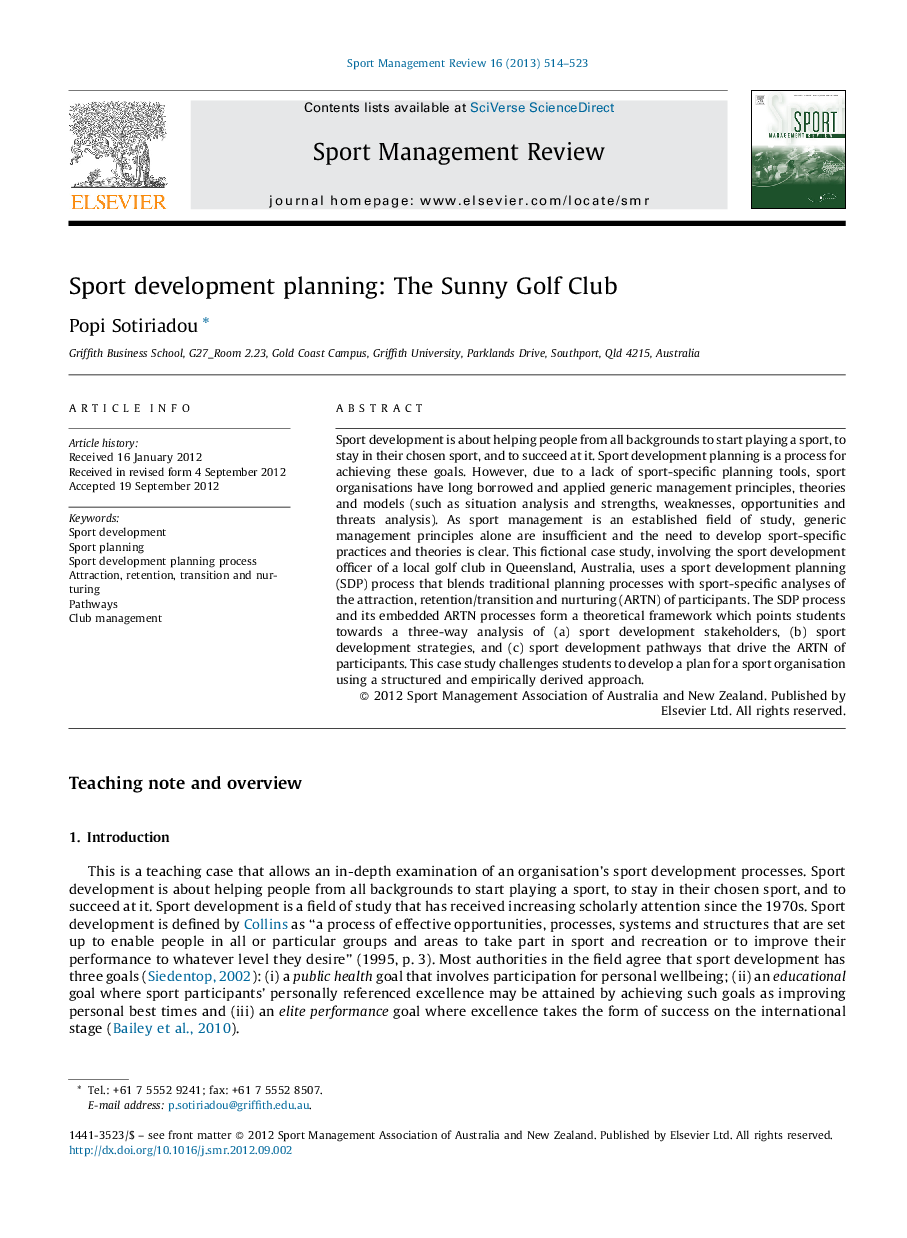| Article ID | Journal | Published Year | Pages | File Type |
|---|---|---|---|---|
| 141017 | Sport Management Review | 2013 | 10 Pages |
Sport development is about helping people from all backgrounds to start playing a sport, to stay in their chosen sport, and to succeed at it. Sport development planning is a process for achieving these goals. However, due to a lack of sport-specific planning tools, sport organisations have long borrowed and applied generic management principles, theories and models (such as situation analysis and strengths, weaknesses, opportunities and threats analysis). As sport management is an established field of study, generic management principles alone are insufficient and the need to develop sport-specific practices and theories is clear. This fictional case study, involving the sport development officer of a local golf club in Queensland, Australia, uses a sport development planning (SDP) process that blends traditional planning processes with sport-specific analyses of the attraction, retention/transition and nurturing (ARTN) of participants. The SDP process and its embedded ARTN processes form a theoretical framework which points students towards a three-way analysis of (a) sport development stakeholders, (b) sport development strategies, and (c) sport development pathways that drive the ARTN of participants. This case study challenges students to develop a plan for a sport organisation using a structured and empirically derived approach.
